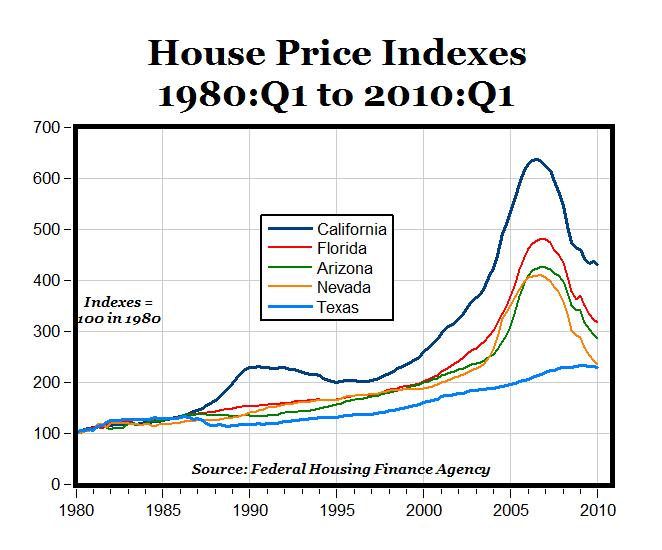From today’s Wall Street Journal article “The Case for Optimism” by Ross Devol, executive director of economic research at the Milken Institute:
Gloom and doom is the hallmark of the current economic debate, as the most recent congressional testimony from Federal Reserve Chairman Ben Bernanke demonstrates. Despite Mr. Bernanke’s generally upbeat message on the Fed’s official forecast, which calls for moderate economic growth of somewhere between 3.0% to 3.5% this year, the market and the media fixated on his acknowledgment that the outlook was “unusually uncertain.” Those words have only reverberated in the past few weeks, bolstering economic pessimists.
There’s a point at which pessimism becomes a self-fulfilling prophesy, scaring businesses away from investing or hiring. The dark tone of today’s discourse is at risk of doing just that.
The Milken Institute’s new study, “From Recession to Recovery: Analyzing America’s Return to Growth” is based on extensive and dispassionate econometric analysis. It concludes that the U.S. economy remains more flexible and resilient—and has more underlying momentum—than is generally acknowledged. In fact, our projections show cause for measured optimism: A return to modest but sustainable growth is close at hand.
America’s businesses are capable of navigating around policy uncertainty and the twists and turns of a volatile global economy. While slow private-sector job growth is to be expected in the early stages of a recovery, the U.S. should add 1.5 million jobs in 2010, 3.1 million in 2011, and 2.6 million in 2012. That will translate into real GDP growth of 3.3% in 2010, 3.7% in 2011, and 3.8% in 2012.
In this pessimistic climate, this forecast will likely be considered contrarian. So why is our economic outlook more sanguine than the current consensus? For one, robust (albeit moderating) economic growth in developing countries, particularly in Asia, will provide support for U.S. exports. Look no further than Caterpillar, which reported a doubling of its earnings in the second quarter of 2010 and whose product line is sold out for the rest of the year.
Improved business confidence is already spurring strong investment in equipment and software. Record-low U.S. long-term interest rates are supporting the recovery. And the benign inflationary environment allows the Fed to keep short-term interest rates near zero until late this year, or even into 2011 if it desires.
Historical context offers further reason to expect a rebound. The peak-to-trough decline in real GDP during this recession was 4.1%, making it the most severe downturn since World War II. But throughout the postwar period, the rate of economic recovery from past recessions has been proportional to the depth of the decline experienced. While this relationship has been somewhat variable, it is well-established. Our projections for GDP growth are above consensus but are substantially below a normal rate of recovery after a recession of this severity.
The naysayers are right that there’s a “new normal” economy, but it’s not that the potential long-term growth rate of the U.S. is substantially diminished, as they say. It’s that this time, the fulfillment of pent-up demand will be subdued because consumers were living so far above their means during the bubble years. Nevertheless, consumer durables and business investment in equipment will see some previously postponed purchases finally happen—if not this year, certainly by 2011 and 2012.
What needs to happen on the policy front in order to build momentum?
In the first place, small businesses need access to more bank credit to create jobs. Banks feel conflicted by calls from the Obama administration to increase lending while regulators are instructing them to add to their reserves. Regulators need to be reminded that some risk is necessary in a market economy.
The White House also should press Congress to pass legislation modernizing Cold War–era restrictions on exports of technology products and services that are already commercially available from our allies. This would boost U.S. exports and reduce the deficit. And if the White House is serious about doubling exports by 2015, it needs to push trade deals with South Korea, Colombia and Costa Rica through Congress.
For its part, Congress must move immediately to restore the lapsed R&D tax credit. Even better, it should expand the credit and make it permanent.
Congress also should pass legislation to temporarily extend the Bush tax cuts that are set to expire at the end of this year. It’s important not to remove any economic stimulus as long as the sustainability of the recovery is in question.
Another must-do: by 2012, Congress needs a credible long-term plan in place to reduce the deficit. If it doesn’t, international financial markets might force our hand by demanding a higher rate of return on U.S. Treasurys.
Washington has to focus like a laser on helping businesses create jobs, while the rest of us should avoid talking ourselves out of a recovery by dwelling on the doom and gloom. The U.S. economy has already adapted to serious imbalances in record time: There’s ample reason to believe in its dynamism in the months and years ahead.
Mr. DeVol is executive director of economic research at the Milken Institute, a nonprofit economic think tank based in Santa Monica, CA.
See related excellent post today from Scott Grannis: “20 Bullish Charts.”

 Robert Barr’s comments from the latest trend tracker:
Robert Barr’s comments from the latest trend tracker:



